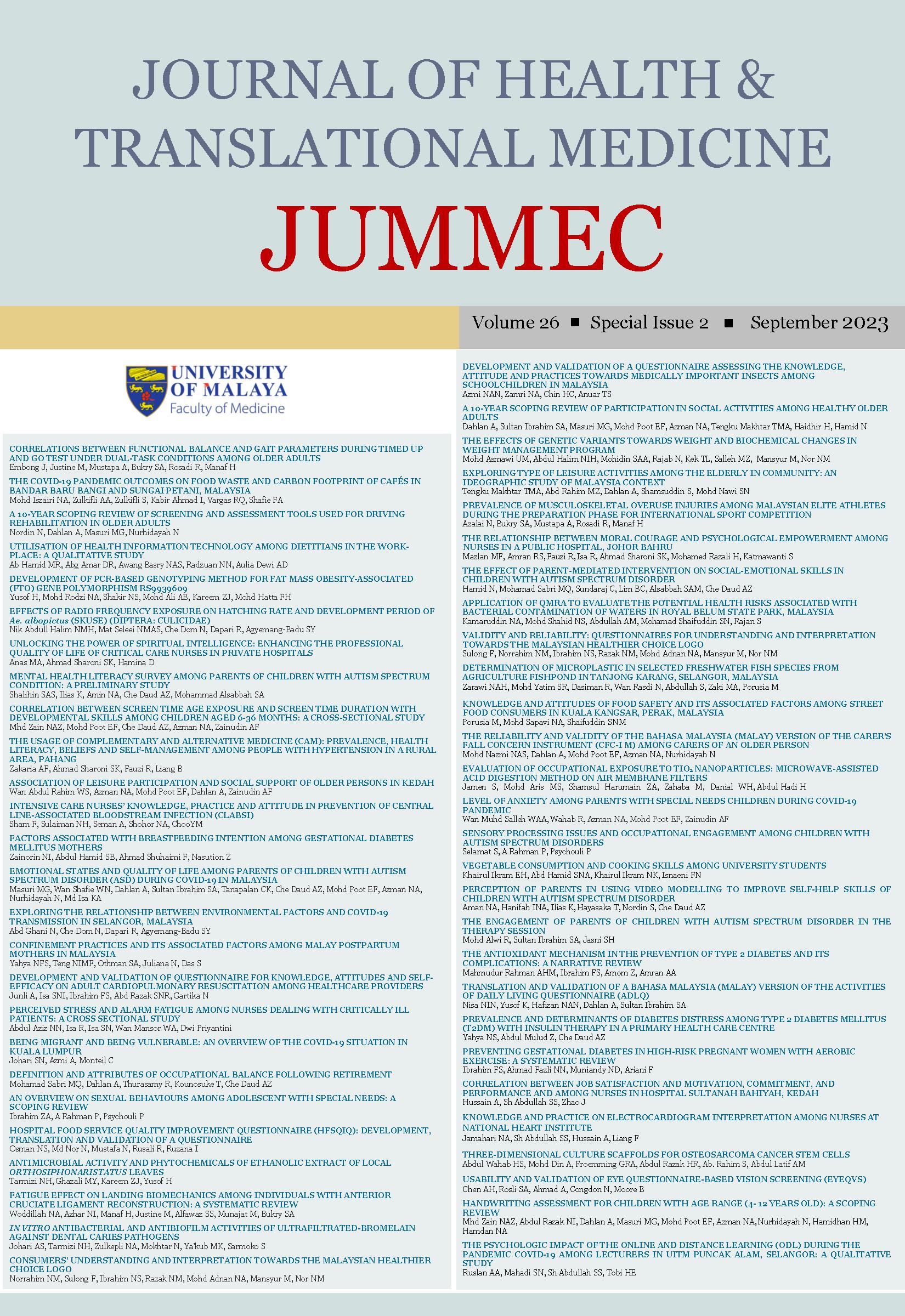APPLICATION OF QMRA TO EVALUATE THE POTENTIAL HEALTH RISKS ASSOCIATED WITH BACTERIAL CONTAMINATION OF WATERS IN ROYAL BELUM STATE PARK, MALAYSIA
Received 2023-07-19; Accepted 2023-09-26; Published 2023-09-27
DOI:
https://doi.org/10.22452/jummec.sp2023no2.34Abstract
Temenggor Lake located in Royal Belum State Park is an important water resource for indigenous people, an ecosystem for aqua organisms and a place for water recreational activities for visitors. The aim of this research was to use a quantitative microbial risk assessment (QMRA) approach to calculate the probability of potential pathogen infection risk to the visitors and the indigenous community. Thirty-six water samples were collected from the surface waters of Temenggor Lake from recreational water activity and indigenous people activity sites from November 2020 till December 2021. Membrane filtration technique was used for bacterial quantification. The risk was estimated using the calculation of the daily risk of infection, annual risk of infection, and risk of illness per annum and per event. The water quality during sampling periods at year-end showed higher bacterial concentrations related to rainfall events. Bacterial concentrations at visitor water activity areas were within Category A allowing for recreational activities with full body contact while water quality at indigenous people water activity areas were classified as Category B to be used mainly for secondary body contact and hence not allowed for swimming and bathing. Notably, indigenous people's settlement areas recorded a higher risk of illness for both E. coli and Salmonella spp., mainly at station A03 (Kg. Sungai Tiang). It has been revealed that water quality in indigenous people and visitor water activity areas were significantly different due to being affected by different types of human activity and other factors such as geohydrological conditions, topography, land use, environmental conditions and events. This study provides baseline data to help in future management strategies to ensure the conservation of the natural landscape and economic viability, in addition to the protection of the local community.
Downloads
Downloads
Published
Issue
Section
License
All authors agree that the article, if editorially accepted for publication, shall be licensed under the Creative Commons Attribution License 4.0 to allow others to freely access, copy and use research provided the author is correctly attributed, unless otherwise stated. All articles are available online without charge or other barriers to access. However, anyone wishing to reproduce large quantities of an article (250+) should inform the publisher. Any opinion expressed in the articles are those of the authors and do not reflect that of the University of Malaya, 50603 Kuala Lumpur, Malaysia.


